According to the International Union for Conservation of Nature (IUCN) Red List of Threatened Species, or Red Book, 1,616 fish species are threatened with extinction. While habitat loss and pollution are important factors in the decline of these species, the biggest threat today is overfishing. 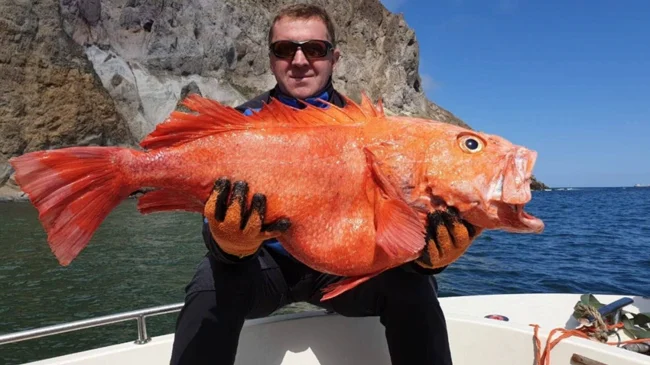
So what if one of these endangered fish ends up on your hook or in your net? It's best to release it back into the water, but not before making a few notes. When did you meet the fish and in what place did you meet this or that type of fish? How many were there and what size were they? Were they adults or young? You must provide this information, along with any photographs you have, to local wildlife authorities. Few people think about this at the time of fishing, but I would like to hope that each of us will think about what will happen in the future. After all, everything in our lives is interconnected, and the disappearance of each species entails unpredictable consequences.
It's difficult to determine which fish are at risk of extinction, but the following list highlights 10 endangered species that are being caught by commercial fishermen and recreational fishermen.
Atlantic halibut
Atlantic halibut, native to the New England/Mid-Atlantic region, is the largest species of the flounder family. Living up to the age of 50 years, the fish can reach a length of 4.5 meters and weigh about 320 kg. But because these slow-growing fish do not become sexually mature until 10–14 years of age, the IUCN classifies them as critically endangered and their numbers are not expected to recover in the near future. 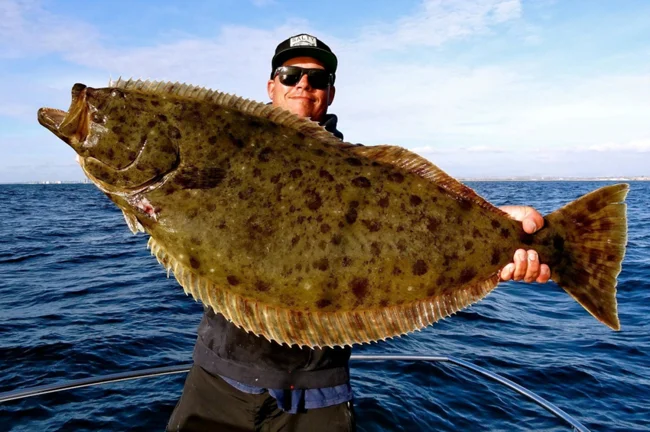
This prompted the United States to fish for Atlantic halibut in its coastal waters. According to the National Oceanic and Atmospheric Administration, Atlantic halibut stocks are at very low levels.
Beluga sturgeon
Beluga is popular not only for its fillet, but also for its caviar, which is considered a delicacy. This ancient fish, which has lived in the Caspian Sea for more than 200 million years, can grow up to 7 meters in length, weigh more than 1,580 kilograms, and can live up to 100 years. Due to the popularity of the eggs, they are very often caught illegally - usually using gillnets - which is a serious threat to the species. This is especially problematic because males become sexually mature at 10-15 years, and females at 15-18 years, and the difference between generations is 20-25 years. 
On top of this, beluga sturgeon are suffering from habitat loss, having lost 90 percent of their historic breeding grounds over the past few decades. Due to this pressure, the IUCN has classified the beluga as critically endangered, and its numbers are expected to continue to decline. Statistics show that in 1992, 573 tons (520 metric tons) of beluga were caught, and in 2007, 36 tons (33 metric tons) were caught, a 93 percent decrease. The World Wildlife Fund reported that 7,000 farmed juvenile sturgeon were released into the Danube River in 2020 to help reverse this population decline.
Southern bluefin tuna
Southern bluefin tuna live in the Atlantic, Indian and Pacific oceans. They can grow up to 2.4 meters in length, weigh up to 260 kilograms and live up to 40 years. The IUCN has classified southern bluefin tuna as critically endangered because the estimated biomass of the spawning stock declined by approximately 85 percent between 1973 and 2009. The species has been heavily fished since the 1950s due to the worldwide popularity of sushi. It is estimated that the population will drop below 500 adults within 100 years unless fishing for the species stops or is at least reduced. 
Orange rough or deep sea bass
Also known as the "slug", this predator has a wide habitat that includes the coasts of New Zealand, Australia, Namibia, and the northeastern Atlantic, Indian and Pacific oceans. They can grow up to 76 centimeters in length and weigh up to 6.8 kg. Life expectancy can be over 140 years, and the age of sexual maturity ranges from 20 to 32 years, making it the epitome of a species that is inherently more vulnerable than others. The trend is exacerbated by the fact that this species is caught at a time when the fish are gathering together to feed and reproduce. 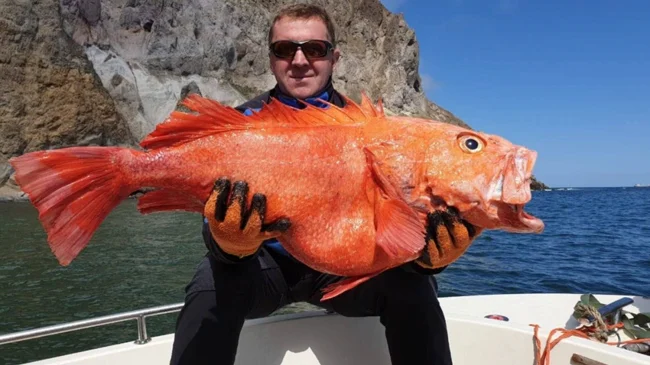
As a result, uncontrolled catches destroy generations. It is sold fresh or frozen without the skin and is considered a delicacy in many restaurants around the world. Although the IUCN has not formally reviewed the species to determine whether it is endangered, a number of other organizations have recognized a significant decline in its numbers after just 25 years of commercial fishing.
Nassau grouper
Nassau grouper lives in tropical and subtropical waters of the western North Atlantic. The fish can grow up to 1.2 meters in length, weigh up to 25 kilograms and live up to 29 years. Nassau grouper are highly prized and heavily fished commercially and recreationally. This results in a significant decline in the population of this species in most countries. More than 30 of the 50 known aggregations throughout its range have disappeared. Today, catching this fish is prohibited and it is on the list of endangered species. 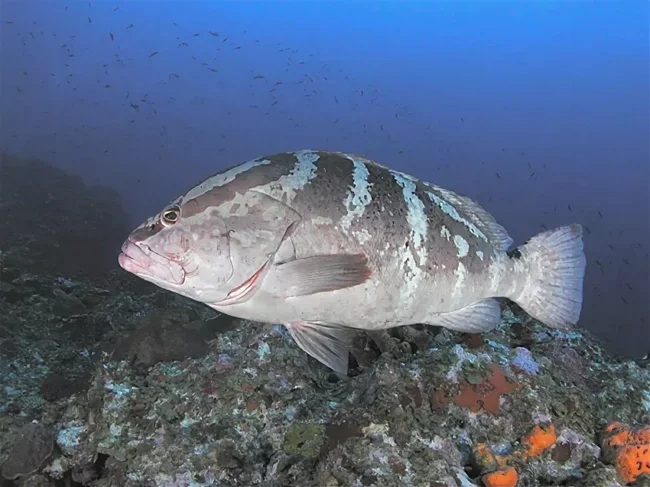
Acadian sea bass or Atlantic sea bass
Acadian sea bass are reddish-orange, can live up to 50 years and grow up to 508 mm. Externally, it is very similar to the deep-sea sea bass Sebastes mentella. The two species can be distinguished by the number of soft rays in the anal fin, internal examination of the gas bladder, or genetic testing. The Acadian sea bass is native to the waters of the northwest Atlantic Ocean and its range extends from Virginia, the Gulf of St. Lawrence, Nova Scotia, western Greenland and Iceland. It lives at depths from 70 to 500 m. It swims near the bottom in areas with clayey-silty or rocky bottoms. 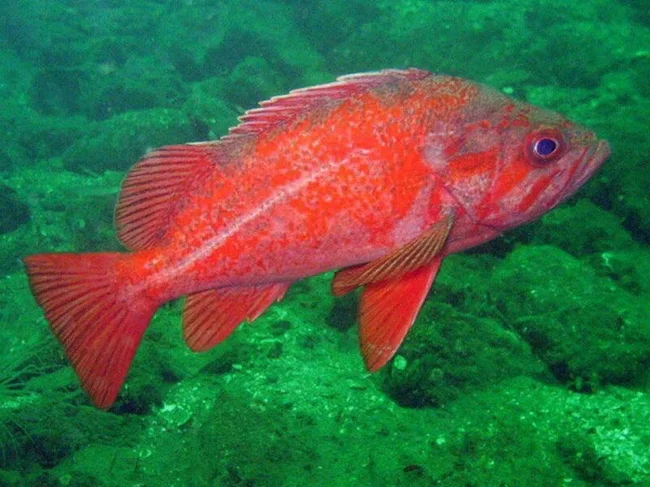
Due to its slow growth rate, low fertility, and being considered an excellent game fish, the Acadian sea bass was classified as critically endangered in 1996 by the IUCN. However, thanks to conservation efforts, the grouper population has recovered, and in 2012 the species was described as fully recovered.
European eel
The species is found primarily in the North Atlantic, Baltic and Mediterranean Seas and faces a unique set of survival challenges. They have a fascinating developmental cycle that begins with their birth in the sea and continues in freshwater rivers thousands of miles inland, where they can grow up to 1.5 meters. When they reach sexual maturity, between 6 and 30 years of age, they return to the sea to spawn. If their path to the sea is blocked, they return to fresh water and can live up to 50 years. But if they return to salt water and begin to reproduce, they will die. 
Because of this unusual life cycle, any eel caught at sea is a juvenile that has not yet had the opportunity to spawn. Other threats to this species include climate change, habitat loss/degradation, pollution, predation and uncontrolled fishing. For these and many other reasons, it is listed as a critically endangered species by the IUCN.
Great winter stingray
This is a fascinating species that scares away predators and stuns prey with a blast of electricity. Most are found in the northwest Atlantic Ocean, from the Gulf of St. Lawrence in Canada to North Carolina in the United States. Fishing by trawling results in the accidental capture of juveniles and a sharp decline in the population of rays, which are slow to reach sexual maturity and have few offspring. Experts believe these factors are
responsible for a 90 percent decline in the number of adults since the 1970s. They are also on the endangered species list. 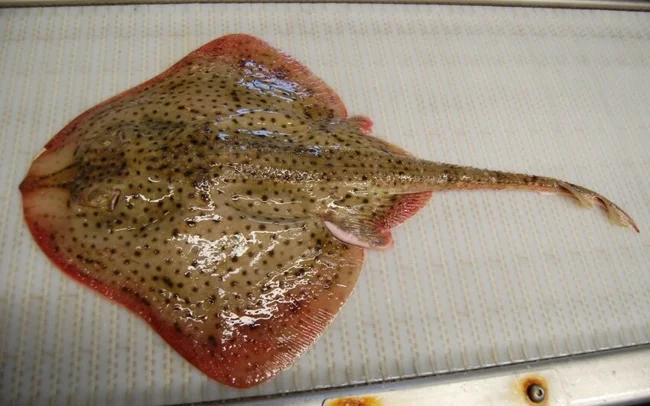
Chinese sturgeon
The Chinese sturgeon historically lived in southwestern Korea, western Kyushu, Japan and China (the Yangtze, Minjiang and Qinotan rivers). However, now it is found only in the Yangtze River, as well as in the East China and South China Seas. They have lived on our planet for more than 140 million years, but their days seem to be numbered. The species has historically been overfished, and the construction of the Gezhouba Dam in 1981 blocked the Chinese sturgeon's migration routes, making it impossible for them to access spawning grounds. 
Currently, there is only one spawning site left under the Gezhouba Dam. Therefore, the IUCN has assessed them as critically endangered. This very large fish can weigh up to 450 kilograms, grow up to 4.8 meters and live for at least 35 years. The Chinese government did try to stock the Yangtze with 9 million sturgeon between 1983 and 2007, but without any ability to reproduce, the population did not increase.
Atlantic bluefin tuna
The Atlantic bluefin tuna is perhaps the most famous endangered fish found in the North Atlantic Ocean. One of the fastest fish in the world, this species can grow up to 4.6 meters and weigh more than 900 kilograms. With a price of up to $100,000 per fish, it is of interest not only to amateur fishermen, but also to commercial organizations. Bluefin tuna fishing has increased dramatically, and most experts agree that without prompt intervention, the slow-growing, slow-maturing species will become extinct. 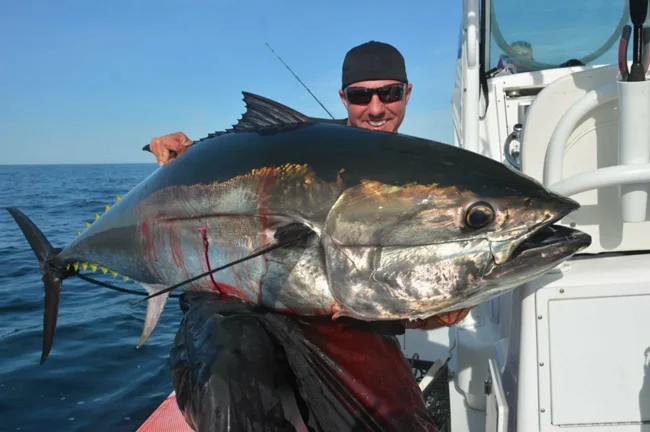
However, international regulation is difficult because bluefin tuna are known to migrate thousands of miles across the ocean. So far, attempts to control population levels have largely failed. By any measure, Atlantic bluefin tuna is listed as a critically endangered species, with stocks in both the Eastern and Western Atlantic declining by at least 51 percent since 1970.
0 comments
